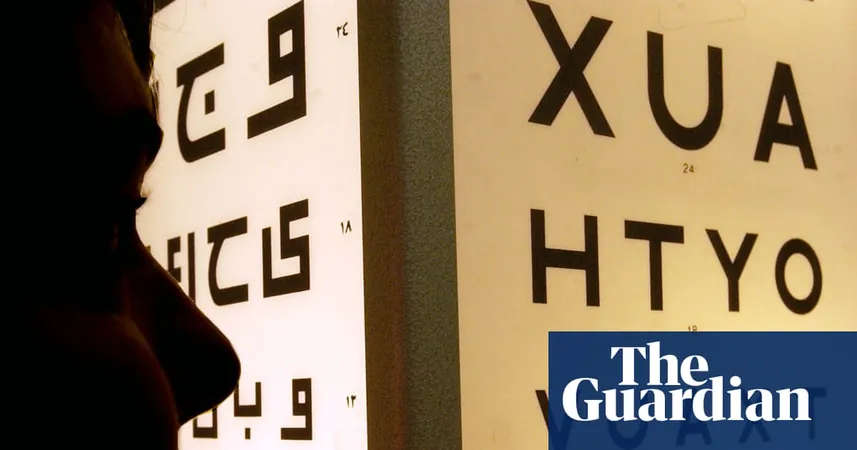
Revolutionary Eye Drops Promise to Replace Glasses and Surgery for Longsightedness
2025-09-14
Author: Noah
A Game-Changer for Millions
In a groundbreaking development, doctors have introduced innovative eye drops that may eliminate the need for reading glasses or invasive surgeries for millions suffering from longsightedness, also known as presbyopia. This condition, affecting hundreds of millions globally, makes it challenging to focus on nearby objects and text.
The Eye Drops: A Simple Solution
Imagine being able to ditch your glasses with just two drops a day! Recent research unveiled at the European Society of Cataract and Refractive Surgeons (ESCRS) in Copenhagen suggests this might soon be a reality. The study revealed that participants experienced significant improvement in their vision, allowing many to read additional lines on eye test charts.
How Do They Work?
The magic lies in a clever combination of pilocarpine, which constricts pupils and helps adjust the lens's shape for better focus at various distances, and diclofenac, a non-steroidal anti-inflammatory drug that mitigates inflammation. Together, they form a potential game-changing alternative for those seeking freedom from glasses or those hesitant to undergo surgery.
Promising Results from a Large Study
In a thorough study conducted in Argentina with 766 participants, those using the eye drops reported considerable vision improvements. Patients used the drops twice daily, and results showed that: - Almost all in the 1% pilocarpine group could read two or more extra lines on the vision chart. - In the 2% group, 69% managed three or more extra lines. - A staggering 84% in the 3% group read three or more extra lines.
Expert Insights
Dr. Giovanna Benozzi, director of the Centre for Advanced Research for Presbyopia in Buenos Aires, highlighted the success stating, "Our findings illustrate rapid and sustained near vision improvements across all drop concentrations. After just one hour of using the drops, patients saw an average enhancement of 3.45 Jaeger lines, showing increased focus at all distances." In fact, an impressive 99% of participants in the 1% group achieved optimal near vision.
Looking Forward
While these findings are encouraging, experts emphasize the need for further research. Prof. Burkhard Dick, the president-elect of ESCRS, noted that larger, multi-centre studies are crucial to validate the safety and effectiveness of this treatment before it becomes a standard recommendation.
Side Effects to Note
Like any medical treatment, the eye drops are not without potential drawbacks. Common side effects include temporary dim vision, slight irritation upon application, and headaches. However, many believe the benefits outweigh these minor inconveniences.
The Future of Vision Correction?
As this new treatment gains traction, it holds the potential to transform the lives of millions by providing a convenient, effective way to manage longsightedness without the hassle of glasses or the risks associated with surgery. Stay tuned as we watch this revolutionary development unfold!









 Brasil (PT)
Brasil (PT)
 Canada (EN)
Canada (EN)
 Chile (ES)
Chile (ES)
 Česko (CS)
Česko (CS)
 대한민국 (KO)
대한민국 (KO)
 España (ES)
España (ES)
 France (FR)
France (FR)
 Hong Kong (EN)
Hong Kong (EN)
 Italia (IT)
Italia (IT)
 日本 (JA)
日本 (JA)
 Magyarország (HU)
Magyarország (HU)
 Norge (NO)
Norge (NO)
 Polska (PL)
Polska (PL)
 Schweiz (DE)
Schweiz (DE)
 Singapore (EN)
Singapore (EN)
 Sverige (SV)
Sverige (SV)
 Suomi (FI)
Suomi (FI)
 Türkiye (TR)
Türkiye (TR)
 الإمارات العربية المتحدة (AR)
الإمارات العربية المتحدة (AR)